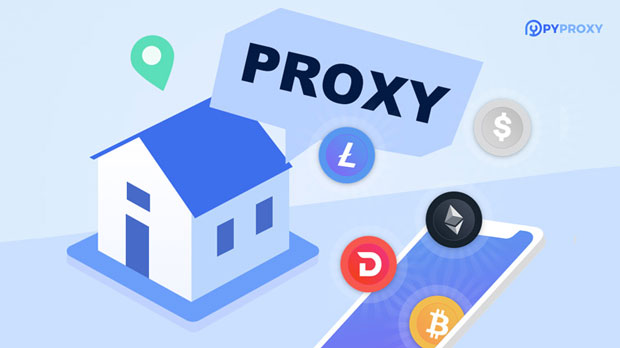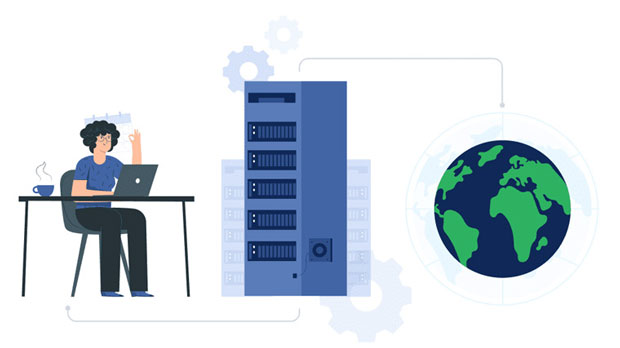In today's digital landscape, proxies have become an essential tool for internet users, offering privacy, security, and access to geo-restricted content. However, many websites have begun to block or limit the use of free ip proxies. This article will explore why some websites refuse access to users who are connecting through free IP proxies. From security concerns and data protection to business interests and user experience, there are several underlying factors that drive websites to take this stance. Let’s dive into the reasons why free IP proxies are often blocked and examine the broader implications of this trend. 1. Security Threats and Fraud PreventionOne of the primary reasons websites block free IP proxies is to prevent security threats. Free proxies are often used by malicious users to hide their true identities when conducting fraudulent activities. This could include activities like:- Data scraping: Automated bots can use free proxies to scrape valuable data from websites, including pricing information, product details, and user-generated content. This can result in unfair competition and data theft.- Credential stuffing: Attackers can use free IP proxies to try a large number of stolen usernames and passwords on a website, attempting to break into user accounts and steal sensitive information.- DDoS attacks: Distributed denial-of-service (DDoS) attacks use multiple devices and IP addresses to overwhelm a website’s servers. Free IP proxies are commonly used in these types of attacks, as they provide anonymity to the attackers.Given the risks associated with free IP proxies, websites employ advanced security measures to detect and block such traffic, ensuring that their users and data remain safe.2. Prevention of Automated Bots and ScrapingMany websites, especially e-commerce platforms and content providers, invest heavily in creating valuable and unique content. Free proxies are often used to carry out data scraping, where bots crawl websites to extract information, such as:- Product prices- Stock availability- User reviews- Contact detailsFor businesses, this is a significant concern as it undermines the value of their intellectual property and can lead to competitors gaining access to proprietary data. As a result, websites implement techniques to detect and block requests from free IP proxies. These methods may include:- CAPTCHAs- Rate limiting- Advanced bot detection algorithmsBy blocking free proxies, websites can protect their content and ensure that only legitimate users interact with their services.3. Protecting Website Resources and User ExperienceWebsites depend on server resources to provide a smooth and efficient user experience. Free IP proxies often generate high volumes of traffic, leading to several issues:- Slow website performance: When a large number of requests are made from free IP proxies, it can slow down the website, affecting legitimate users.- Server overload: Free proxies can lead to a sudden spike in traffic, which may overwhelm the servers and cause downtime or slow loading times.- High bounce rates: If users experience delays or issues due to proxy traffic, they may leave the website quickly, leading to increased bounce rates and decreased user engagement.By blocking free IP proxies, websites can maintain control over traffic flow, ensuring a consistent user experience for all visitors.4. Geo-Restriction CircumventionAnother reason why websites block free IP proxies is to prevent users from bypassing geo-restrictions. Many websites impose region-based content restrictions for various reasons, including:- Licensing agreements: Some content may only be available in specific regions due to licensing deals.- Legal compliance: Websites may need to comply with local laws and regulations that limit access to certain content based on location.- Regional pricing: Some e-commerce websites use geo-targeting to offer region-specific prices or deals.Free IP proxies are commonly used to disguise a user's location and gain access to content that would otherwise be unavailable. For example, a user in one country may use a free ip proxy from another country to watch streaming content that is restricted to that region. To combat this, websites employ various techniques to detect and block proxy traffic, ensuring that users cannot easily bypass these geo-restrictions.5. Quality of Service and Trust IssuesWebsites also block free IP proxies to maintain the quality of service and build trust with their users. Free proxies often come with a range of issues that can degrade the overall user experience:- Unstable connections: Free proxies are more likely to suffer from poor connection quality and unreliable performance.- Malicious content: Some free proxy servers may inject ads, malware, or other unwanted content into the browsing experience.- Privacy concerns: Free proxy services may log user data, jeopardizing the privacy and security of users' online activities.By blocking free IP proxies, websites can ensure that their visitors are not exposed to these risks. They can also prioritize legitimate users who are more likely to have a better browsing experience and contribute positively to the website’s ecosystem.6. Revenue Protection and Business InterestsFor many websites, especially those in the e-commerce, subscription-based, and advertising sectors, revenue generation is closely tied to user engagement. Free proxies can undermine these business interests in several ways:- Ad fraud: Free proxies can be used to manipulate click-through rates and generate fake traffic to inflate ad revenue, which can harm advertisers and undermine the website’s trustworthiness.- Subscription abuse: Users can use free proxies to exploit promotional offers or free trials multiple times, reducing the website’s ability to generate revenue from legitimate subscriptions.To protect their bottom line and ensure that users adhere to the terms of service, websites block free IP proxies and rely on more sophisticated traffic filtering techniques.7. Technological Advancements in Proxy DetectionWith advancements in artificial intelligence (AI) and machine learning, websites are increasingly able to detect and block proxy traffic. These technologies enable websites to:- Analyze traffic patterns in real-time: AI algorithms can identify suspicious patterns that are common among proxy users, such as large volumes of requests from the same IP range.- Fingerprint devices and browsers: Machine learning models can create detailed profiles of users based on their device and browser characteristics, making it easier to detect proxy usage.- Use behavioral analysis: By studying user behavior, websites can identify anomalies, such as rapid navigation between different regions or inconsistent browsing patterns, that indicate the use of a proxy.With these advanced techniques, websites can more effectively block free IP proxies and ensure that only legitimate traffic is allowed to access their services.ConclusionThe decision to block free IP proxies is driven by a range of factors, including security, user experience, business interests, and the need to protect valuable content. While proxies offer anonymity and bypassing capabilities for users, they also create significant challenges for websites in terms of fraud prevention, data protection, and maintaining a high-quality user experience. As a result, websites continue to invest in technologies and strategies that detect and block proxy traffic, ensuring that they can safeguard their resources and provide a secure and seamless experience for their legitimate users.Understanding these motivations helps users better navigate the internet while being aware of the potential risks and limitations associated with free IP proxies.
Jan 28, 2025




























































